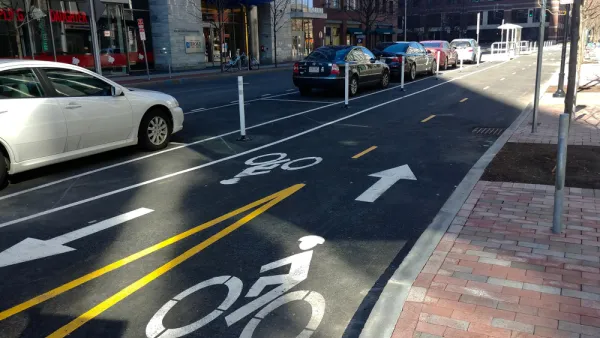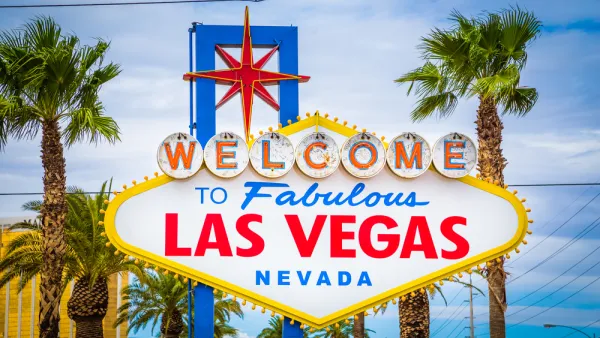When I read the subtitle to the recent GHSA bike safety report, "Adult Males and Urban Environments Now Represent Bulk of Deaths," I took an interest as I fit that demographic. I was surprised to read here about the dispute that erupted from it.
"The Governors Highway Safety Association (GHSA), a non-profit group representing state transportation safety departments, regularly issues reports highlighting safety concerns on the nation’s roads," write Daniel C. Vock, transportation and infrastructure reporter, and Mike Maciag, d "But rarely do those reports come under fire the way that the group’s report last week on bicyclist safety did."
The report, written by the former head scientist for the Insurance Institute for Highway Safety, Allan Williams, highlighted a 16 percent upswing in cyclist fatalities between 2010 and 2012.
Cyclist groups pounced on the report. They criticized the group’s methodology and the report’s focus on cyclist behavior [e.g. alcohol and helmet usage], rather than inadequate infrastructure, in contributing to bicyclist deaths.
Our post, "Dispute Over Bike Fatality Report," cites a Streetsblog piece: "(B)ike fatalities nationwide are lower than historic highs set in 1975—even though bike ridership is currently soaring...State officials who are interested in helping their residents safely enjoy the benefits of biking might want to consider whether, on this issue, the GHSA is actually speaking for them."
Martha Roskowski, director of the green lane project for People for Bikes, explains. “There is a lot of sensitivity in the bike world around safety questions, because safety is the biggest barrier to people riding bikes."
Did bike advocates see the report as a warning to those who might otherwise consider taking up biking, resulting in fewer riders, which paradoxically would make for less safe urban biking environments (due to safety in numbers)?
When I read the statistics about helmet usage (click on Chapter 8: Bicycle Helmet Use in contents of the 19-page report [PDF]), the message was pretty clear, a recent report notwithstanding:
(M)any bicyclists do not wear helmets. In the 2012 national survey of U.S. adults, 46 percent of bicyclists said they never wore them...In 2012, FARS data indicated that 17 percent of fatally injured bicyclists were wearing helmets, 65 percent were not, and helmet use was unknown for 18 percent.
Similarly, the point was pretty clear about alcohol, though one need not read a report to recognize that alcohol-impaired cycling does not make for safe riding. However, the report notes a disturbing revelation when comparing blood alcohol content (BAC) in cyclist versus motorist fatalities that may give cycling advocates pause. From Chapter 9 [PDF]:
The percentage of bicyclists with high BACs has remained relatively constant from 1982 to 2012, ranging from 23 percent to 33 percent. Of note is the fact that between 1982 and 1992, the percentage of high BACs among bicyclists changed little, but dropped sharply for passenger vehicle drivers.
Rather than dissuading folks from bicycling, Jonathan Adkins, executive director of GHSA, who stood by the report, stated, "The reason for pointing out the recent increase in fatalities is to make changes before more deaths occur."
Ultimately, reaction to the report may pit cycling advocates against safety advocates, similar to the debate on bike helmet usage. It shouldn't.
FULL STORY: Why Cyclist Groups Lashed Out on the Latest Bike Safety Report

Analysis: Cybertruck Fatality Rate Far Exceeds That of Ford Pinto
The Tesla Cybertruck was recalled seven times last year.

National Parks Layoffs Will Cause Communities to Lose Billions
Thousands of essential park workers were laid off this week, just before the busy spring break season.

Retro-silient?: America’s First “Eco-burb,” The Woodlands Turns 50
A master-planned community north of Houston offers lessons on green infrastructure and resilient design, but falls short of its founder’s lofty affordability and walkability goals.

Test News Post 1
This is a summary

Analysis: Cybertruck Fatality Rate Far Exceeds That of Ford Pinto
The Tesla Cybertruck was recalled seven times last year.

Test News Headline 46
Test for the image on the front page.
Urban Design for Planners 1: Software Tools
This six-course series explores essential urban design concepts using open source software and equips planners with the tools they need to participate fully in the urban design process.
Planning for Universal Design
Learn the tools for implementing Universal Design in planning regulations.
EMC Planning Group, Inc.
Planetizen
Planetizen
Mpact (formerly Rail~Volution)
Great Falls Development Authority, Inc.
HUDs Office of Policy Development and Research
NYU Wagner Graduate School of Public Service



























